In the digital age, having a strong online presence is crucial for charities looking to make a significant impact. SEO plays a crucial role in online visibility, influencing how easily potential supporters can discover your organisation.
While traditional fundraising campaigns remain vital, harnessing the power of the internet through Search Engine Optimization (SEO) can amplify your organisation's online fundraising efforts. By implementing effective SEO strategies, fundraisers can expand their reach, attract more donors, and ultimately make a greater impact.
In this article, we'll dive into SEO basics and best practices tailored specifically for fundraisers.
2. 7 reasons why SEO is crucial for charities and online fundraising
3. SEO Glossary: terms you should know
4. 14 SEO Strategies and Best Practices for Charities
What is SEO?
SEO helps websites appear higher in search engine results by using specific techniques and practices. This makes it easier for users to find the website when searching on platforms like Google or Bing. The goal of SEO is to increase visibility and drive more traffic to pages on your website. By optimizing content and improving website structure, SEO can improve the overall performance of a website.
For nonprofits, SEO is a powerful tool that can significantly boost online presence and impact. By optimising web content, structure, and relevance to keywords, charities can improve their rankings on search engines like Google. This boosts the chances of potential supporters, donors, and volunteers discovering their websites.
SEO helps nonprofits effectively communicate their mission, reach a broader audience, and stand out in the competitive digital landscape.
7 reasons why SEO is crucial for charities and online fundraising
Wondering why SEO is crucial for charities? Here are some of the main reasons:
- Increased Visibility: SEO helps charities improve their visibility in search engine results pages (SERPs), making it easier for potential donors, volunteers, and supporters to find them online. Higher visibility means more opportunities to connect with individuals who are interested in their cause and are looking for ways to contribute.
- Cost-Effective Marketing: SEO offers a cost-effective alternative to traditional marketing methods. By optimising their websites for search engines, charities can attract organic traffic without having to invest significant resources in paid advertising campaigns. This is particularly beneficial for organisations with limited marketing budgets.
- Reach a Wider Audience: Effective SEO strategies allow charities to reach a wider audience beyond their immediate geographic location. By targeting relevant keywords and optimising their content, charities can attract visitors from different regions and countries, increasing their reach and impact.
- Build Trust and Credibility: Websites that appear at the top of search results are often perceived as more trustworthy and credible by users. By implementing SEO best practices, charities can improve their search engine rankings and enhance their reputation as trustworthy organisations dedicated to making a positive difference in the world.
- Attract More Donors and Supporters: When charities rank higher in search engine results, they are more likely to attract visitors who are actively searching for ways to support charitable causes. By providing valuable information, compelling stories, and easy donation options in a well crafted donation form, charities can convert website visitors into donors and supporters and significantly improve their online fundraising.
- Compete with Larger Organisations: SEO levels the playing field for charities, allowing smaller organisations to compete with larger, well-established nonprofits. By focusing on niche keywords and creating high-quality, relevant content, smaller charities can increase their visibility and compete for the attention of potential donors and volunteers.
- Long-Term Sustainability: Unlike traditional advertising campaigns that have a finite lifespan, the benefits of SEO can be long-lasting. Once a charity's website achieves higher rankings in search results, it can continue to attract organic traffic and support for months or even years to come, providing a sustainable foundation for long-term growth and impact.
SEO Glossary
Before discussing SEO best practices, let's first review a list of important words. These words will help you navigate the online world more effectively. Familiarising yourself with these technical SEO terms will empower you to make informed decisions. They will also help you implement effective strategies, and optimise your web presence for search engines.
- Organic Traffic: Visitors who come to a website through unpaid, non-advertising search engine results.
- Keywords: Words or phrases users type into search engines (like Google) to find relevant content.
- Meta Tags: HTML tags providing information about a webpage, including title, description, and keywords.
- Anchor Text: The clickable text in a hyperlink. Anchor text should be descriptive and relevant to the linked page's content, as it helps search engines understand the context of the link.
- Backlinks: Links from other websites to your site, indicating authority and improving search rankings.
- Indexing: Storing and organising crawled information for quick retrieval in search results.
- On-Page SEO: Optimising individual web pages for higher search rankings.
- Off-Page SEO: Strategies implemented outside the website to improve its visibility and authority.
- Alt Text: Descriptive text for images, helping search engines understand their content.
- PageRank: An algorithm developed by Google founders to measure the importance of web pages.
- SERP (Search Engine Results Page): The page displayed by search engines in response to a query, containing organic and paid results.
14 SEO Strategies and Best Practices for Charities
SEO techniques are crucial to maximise the effectiveness of your website and donation forms. These techniques help make them intuitive and user-friendly. By following these guidelines, you can enhance your online presence, attract more visitors, and streamline the online fundraising process.
As described in the glossary above, optimising individual web pages to improve their ranking on search engines and attract more relevant traffic is referred to as On-page SEO.
It involves improving on-page elements to make the page more search engine-friendly and user-friendly. Ranking factors include: content, meta tags, headers, images, and other HTML elements.
The goal of SEO is to provide search engines with clear signals about the content and relevance of a page. Improving its visibility in search engine results pages (SERPs) for specific searches made by users.
What on-page SEO practices can you apply?
Perform keyword research
Identify relevant keywords and incorporate them naturally throughout your website content, including donation forms.
Choose a focus keyword, also called a primary keyword, that represents the main topic of your content. This keyword is carefully chosen based on its relevance to the content. As well as its search volume, and potential to attract the target audience through search engines.
Use tools like Semrush, Ahrefs, or Moz (It's free!) to find popular keywords in your area that are important to your audience.
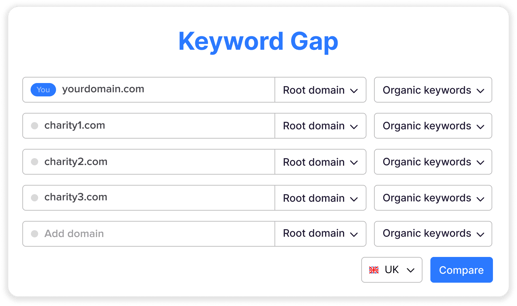
If you're writing a blog post about your Christmas fundraising, your main keyword could be "charity Christmas gifts". It could also be “local children's charities”. When writing new content for your campaign’s website always consider keywords your audience may search for.
To discover additional keyword ideas, you can check Google Trends. Another option is to use Semrush's Keyword Gap tool. This tool allows you to see the keywords that other charities in your field are ranking for.
Incorporating your target keyword organically within your text is important. It must appear in crucial locations like the URL, title, subheadings, opening paragraph, body content. Also remember to include it in your meta description and image alt text.
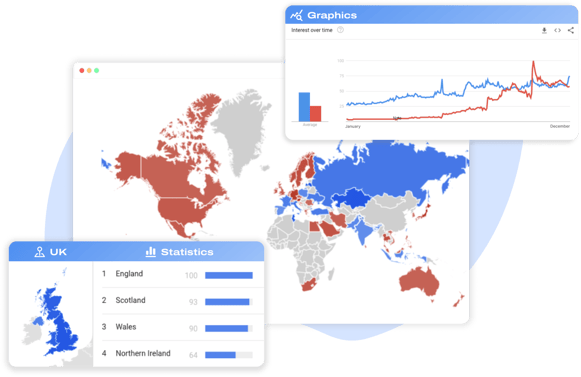
Optimise title tags and meta descriptions
A title tag is an HTML element that specifies the title of a web page. It appears in the browser's title bar or tab, and it serves as the main link when a page is shared on social media or displayed in search engine results.
To catch users' attention, keep your title tags concise and compelling, with a maximum of 60 characters.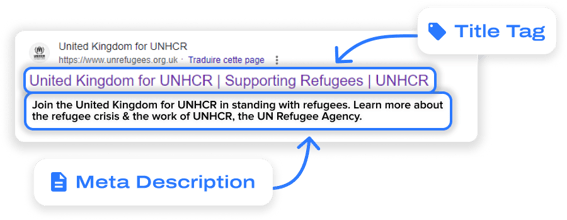
A meta description is short text that provides a concise summary or description of the content of a web page. It is typically displayed in search engine results below the title tag and serves to give users a brief preview of what the page is about. Meta descriptions should also help users quickly understand the page’s topic, encourage them to click on it, and improve visibility in search engine results.
Keep meta descriptions under 105 characters, featuring your primary keyword and include a compelling call-to-action.
Create SEO-friendly URLs
Use descriptive but straightforward URLs that accurately represent the content of each page. Avoid long numbers that have no meaning, or even publish dates. Make sure to include your primary keyword in the URL. 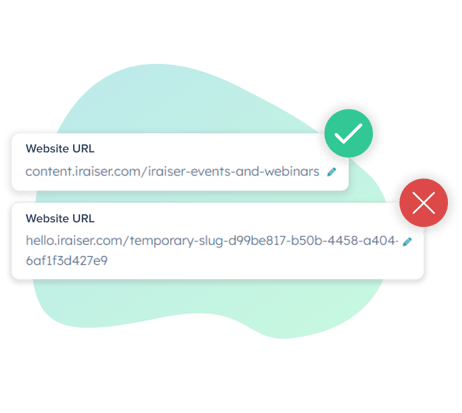
Improve website loading speed
Optimise images by compressing them so they load faster (you can use this free tool TinyJPG), and add an alt text to each one. Make sure to also minify code, and use caching techniques to reduce loading times, enhancing both user experience and search engine rankings.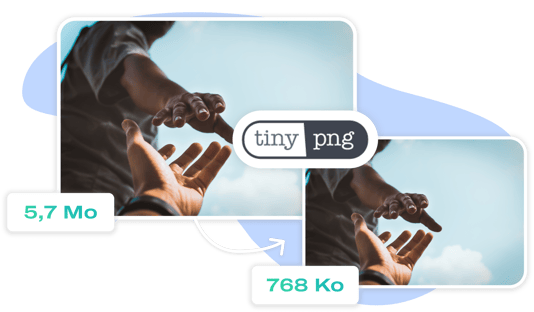
Alt text
Alt text, short for Alternative text, is a descriptive attribute added to an image when uploading it on a website or blog. Alt text provides a textual description of an image. It acts as a backup when images are not displayed.
It also allows screen readers to enable individuals with visual impairments to understand the images. Let's say your charity works to provide fresh water for small towns in Africa. An example of an Alt text of an image could be: "Smiling children joyfully sipping clean, fresh water."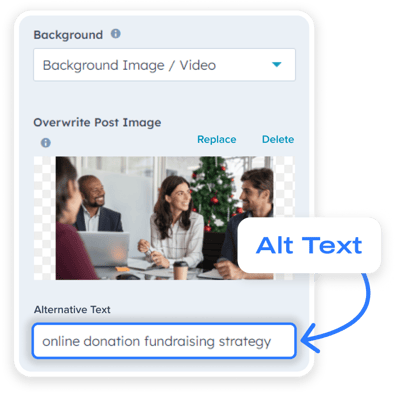
Develop high-quality content
Publish informative, engaging, and shareable content related to your cause to increase organic traffic and encourage backlinks.
When publishing content on your website or campaign page, it’s important to correctly structure your page or article.
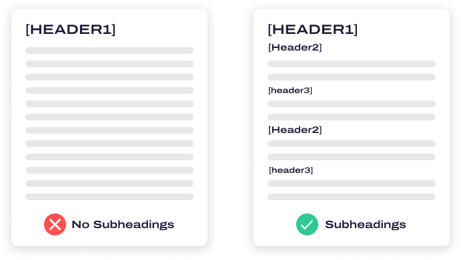
Using Headers helps search engines understand the hierarchy and structure of your content or page. Use the H1 tag for your page title. The H1 should include your primary keyword (or focus keyword) employ H2s for section headings, and utilise H3s and H4s to organise and enhance readability in longer content.
Start with creating a content strategy. Use our free content plan template to help you get started. Download it here! (pop-up form) 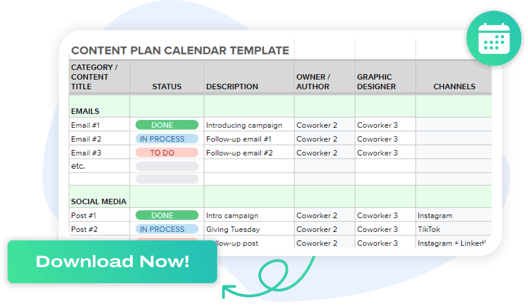
Internal Linking
Seek chances to connect new content with your current pages and vice versa. Additionally, make sure to update any links to URLs that you've modified or eliminated.
What does an example of such internal linking look like? It's simple, add a suggestion with a new page or article to your text, like this: Want to improve your online fundraising? Don't miss this article with 11 tips to enhance your online fundraising strategy.
Link Building
Link building refers to the process of having your site linked on other websites. This could involve reaching out to other organisations, partners, or influencers in your sector to have a guest post on their site. It can also include an exchange of linking on each other's websites.
Also known as backlinks, they are a key SEO best practice. Backlinks show search engines that your content is valuable and authoritative.
Content Marketing
We already mentioned content creation as mainly an on-page SEO practice. Sharing your content across various channels and promoting it effectively is called off-page SEO.
This can generate interest in your charity, boost your cause, and increase traffic to your website.
Developing a well-rounded content strategy that incorporates various types of content enhances your visibility. It allows you to adapt to different channels and reach broader audiences. Here are some types of content to consider:
- Mission and Impact Stories
- Showcase specific projects or initiatives that have achieved meaningful results
- Volunteer Spotlights
- Donor Appreciation Content
- Educational Resources
- Partnership Spotlights
- Behind-the-Scenes Content
Regularly Update Content
Keep your website fresh and up-to-date by regularly publishing new content and updating existing pages. This signals to search engines that your site is active and relevant.
Website speed and navigation
The main point to keep in mind is to simplify navigation. Make sure your website's navigation is clear and intuitive, and users can easily find information. Most importantly your donation forms should be easy to find! For easy tips to optimise your donation forms read our article.
Mobile Optimisation
With an increasing number of users accessing the web through mobile devices, it's crucial to ensure that your website is mobile-friendly. Responsive design and fast-loading pages are key factors for both user experience and SEO. 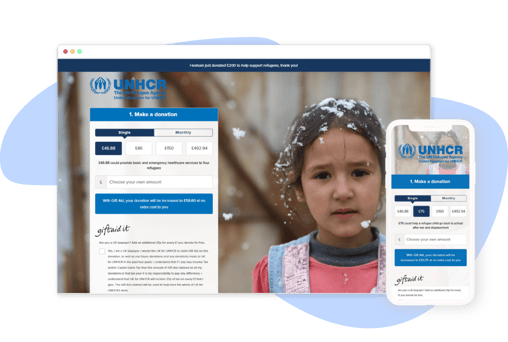
Site structure
This refers to the organisation of your website. Organise your site logically and hierarchically, employing a sound internal linking strategy and clear navigation to keep all pages just a few clicks away from the homepage. Internal linking means creating links within your website that connect one page to another, preventing what are called orphan pages, which are hard to find by online users.
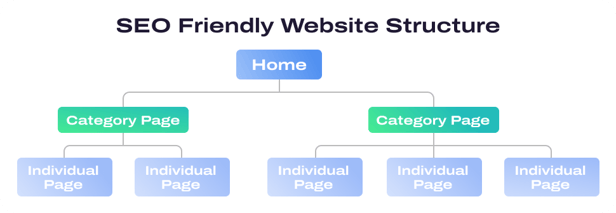
Proper site structure allows search engines to find and understand your content, it also enhances the navigation experience for users on your website.
These elements can influence how search engines rank pages of your site in search results.
Monitor and Analyse Performance
Use tools like Google Analytics 4 and Google Search Console to track your website's performance, including organic traffic, keyword rankings, and user behaviour. Use this data to identify areas for improvement and refine your SEO strategy over time.
By incorporating these strategies, you can optimise your website and donation forms, increase visibility in search engine results, and provide a seamless and user-friendly experience that encourages visitors to donate to your cause.
Would you like to explore this topic further? Discover 5 tips to drive traffic to website
